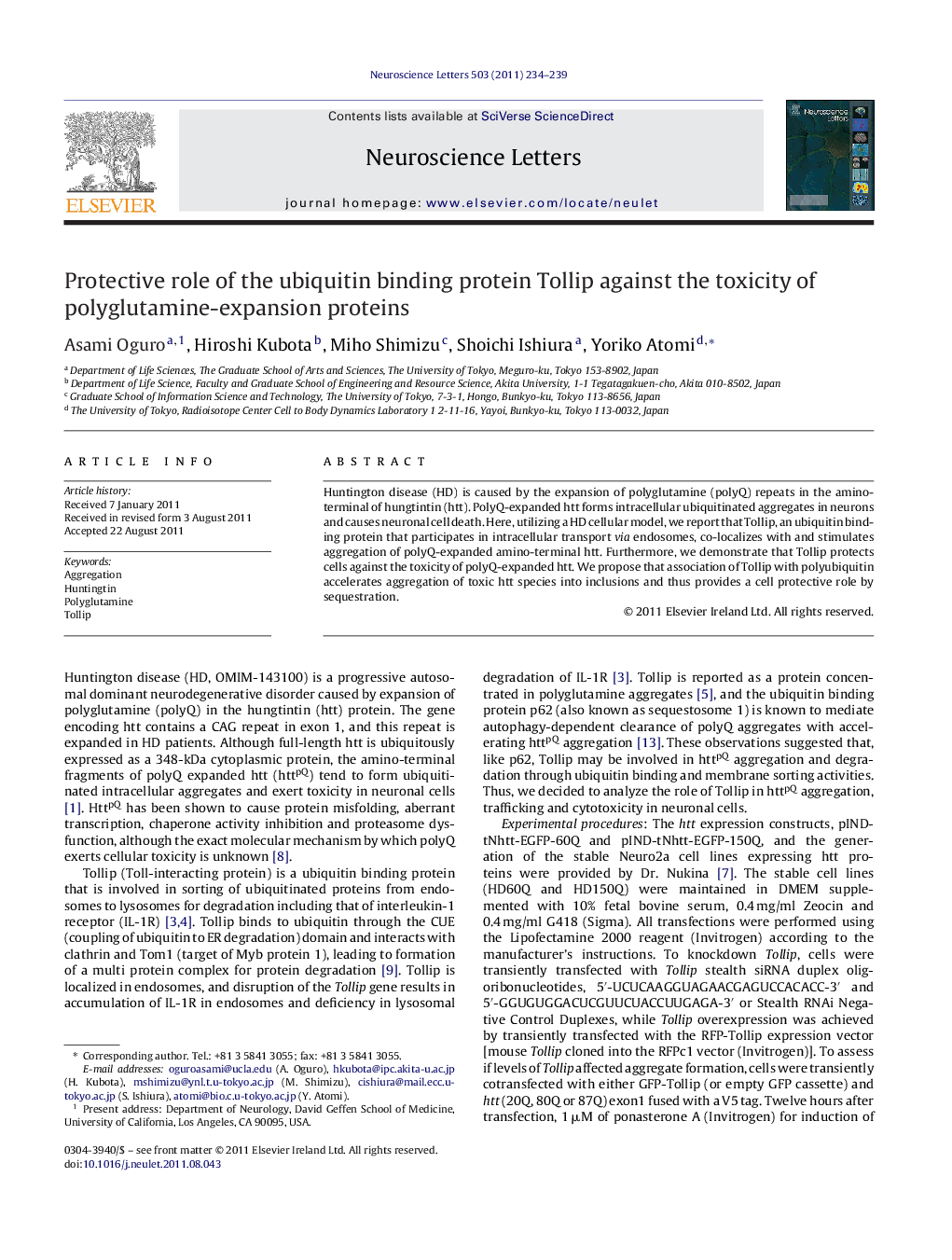| Article ID | Journal | Published Year | Pages | File Type |
|---|---|---|---|---|
| 4344905 | Neuroscience Letters | 2011 | 6 Pages |
Huntington disease (HD) is caused by the expansion of polyglutamine (polyQ) repeats in the amino-terminal of hungtintin (htt). PolyQ-expanded htt forms intracellular ubiquitinated aggregates in neurons and causes neuronal cell death. Here, utilizing a HD cellular model, we report that Tollip, an ubiquitin binding protein that participates in intracellular transport via endosomes, co-localizes with and stimulates aggregation of polyQ-expanded amino-terminal htt. Furthermore, we demonstrate that Tollip protects cells against the toxicity of polyQ-expanded htt. We propose that association of Tollip with polyubiquitin accelerates aggregation of toxic htt species into inclusions and thus provides a cell protective role by sequestration.
► We hypothesized Tollip has proteasomal functions to PolyQ/htt aggregate. ► Knockdown of Tollip inhibits aggregation of PolyQ/htt in cultured neuronal cells. ► Overexpression of Tollip inhibits htt-dependent cell death. ► Tollip protects neuronal cells from the toxicity of misfolded proteins. ► Tollip plays an essential role in preventing polyQ/htt toxicity in neuronal cells.
